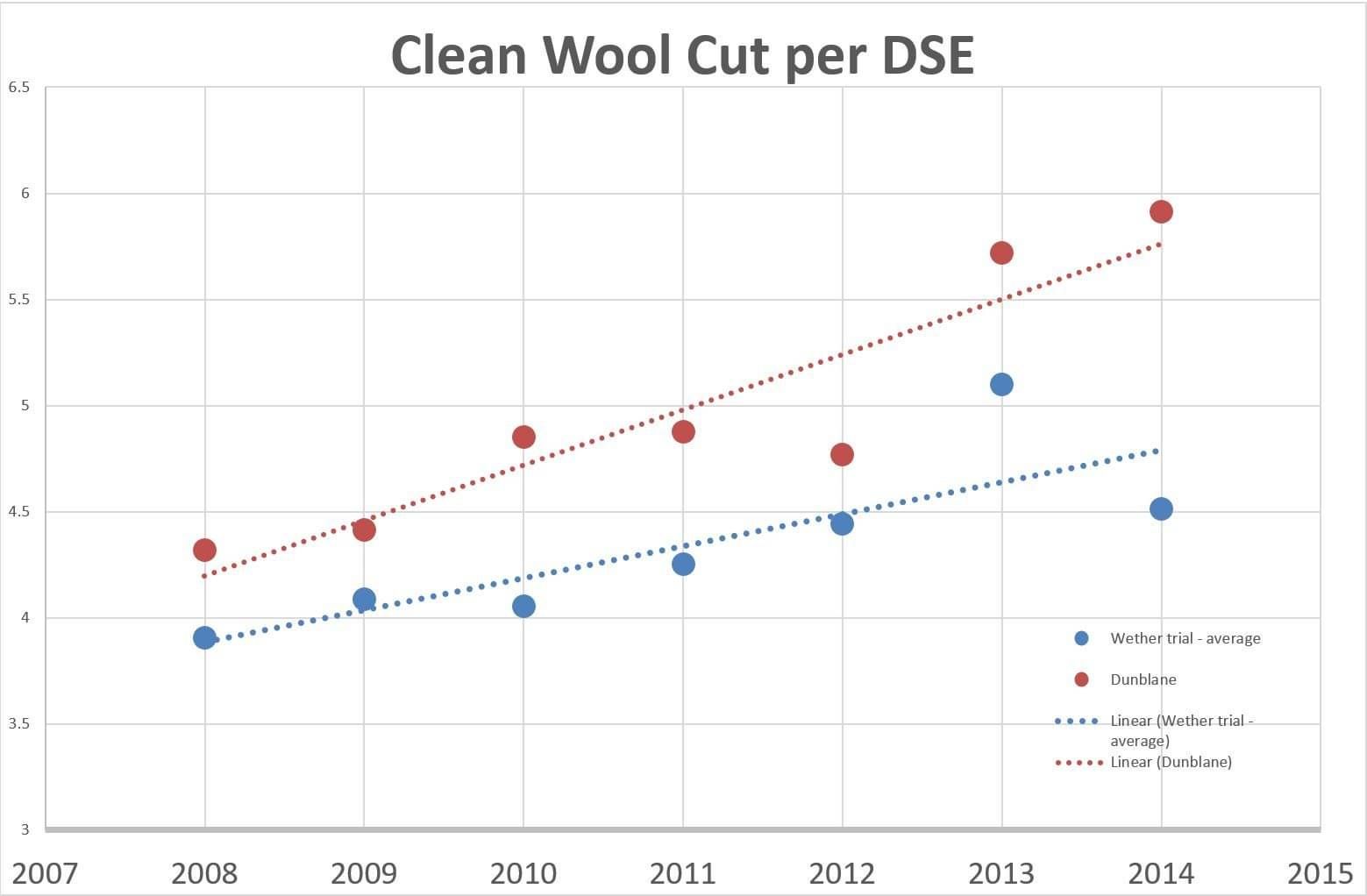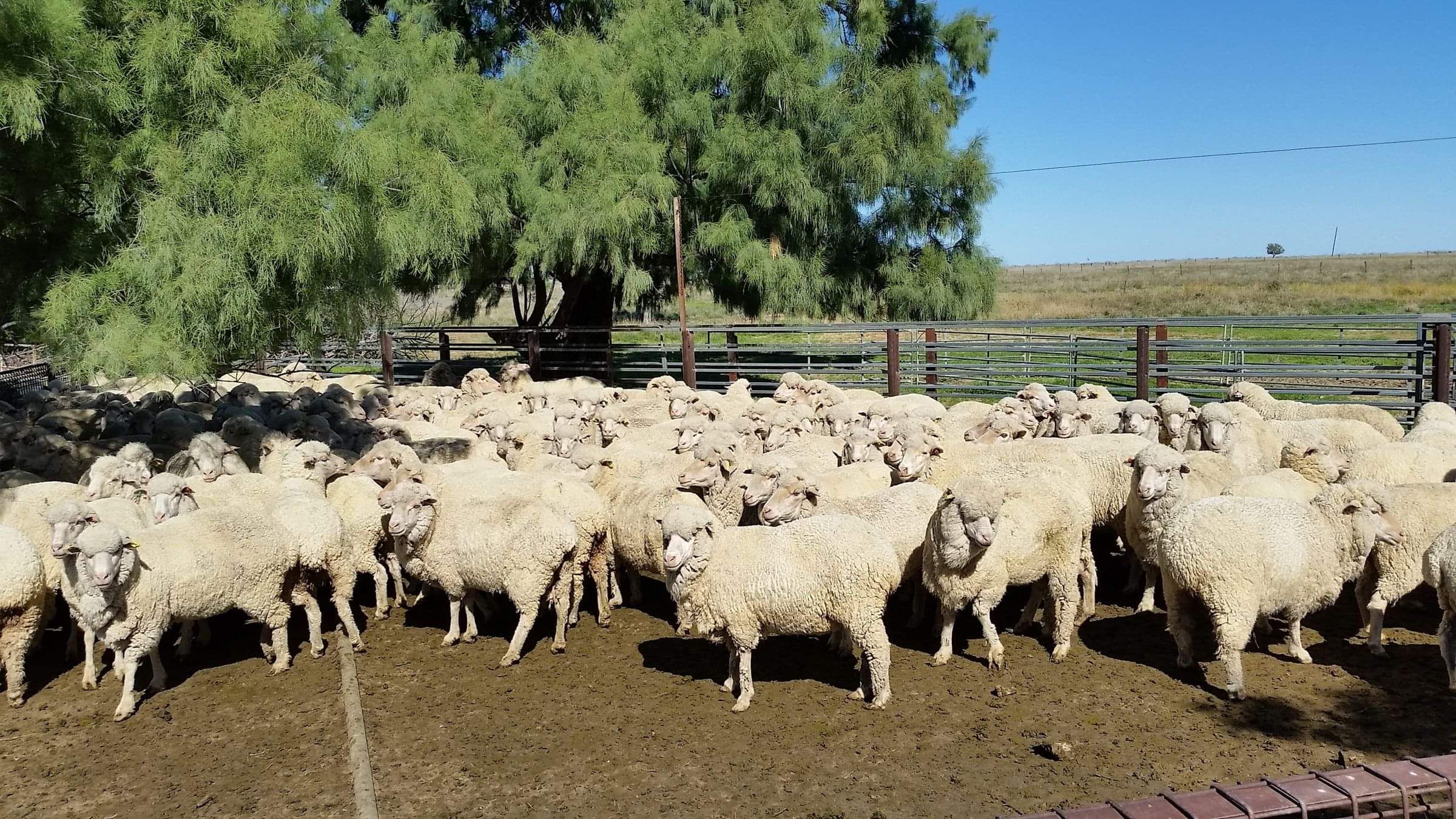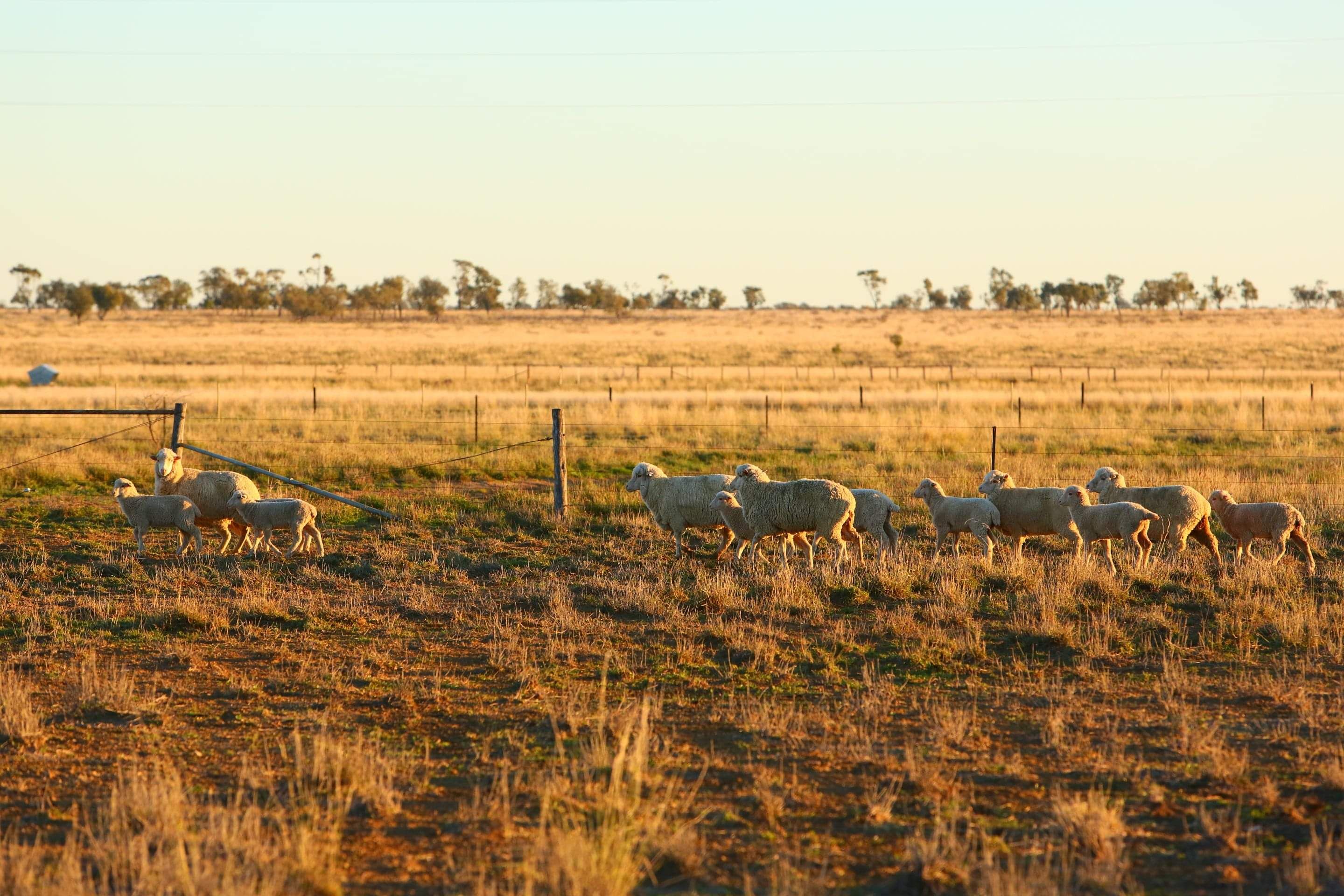flock performance
Dunblane's average flock Fibre Diameter (FD) is 18.0µ. A few years ago, we achieved our desired balance between higher prices per kg and the discounts that occur for ultra superfine wool produced in the pastoral zone. We are now focusing on other economic traits such as Clean Fleece Weights (CFW), Staple Strength (SS) and wool cut per Dry Stock Equivalent (DSE).
Since grass is a major limiting input in our pastoral systems, a profitable wool production system requires that we have sheep that are efficient convertors of grass into wool. The efficiency of the converting system (the sheep), is critical to business profitability. Consider a 70kg wether producing a 5.5kg fleece compared to a 45kg wether producing a 4.5kg fleece. One animal is using a lot more grass to produce a kg of wool than the other.
The following data demonstrates the considerable and on-going improvement of the genetics of our sheep flock.
In a recent progeny trial where we compared weaners from our own syndicate rams to weaners bred from the sires we used in our AI program, our weaners held their own and performed very well, indicating our genetic base of our sheep is very high.
wool cut
Wool cut is critical to overall fleece value and business profitability and we select aggressively to increase our Clean Fleece Weights (CFW). In the past we balanced selection pressure between Fibre Diameter (FD) and CFW. Now we have achieved our goals for FD, we are aggressively pursuing goals for CFW with a moderate improvement in body weight.
The graph to the right shows an encouraging trend of increasing wool cuts from the young rams presenting at their 1st assessment.
More importantly, when we compare clean fleece wool cuts from the various progeny groups from the 2015 AI program that we assessed in September 2017, the Dunblane (home bred) progeny performed reasonably similar to the Hazeldean rams and micron'ed well against the Billandri sire. The two Hazeldean and the Billandri sire are three proven sires and rank highly on the Merino Superior Sires website.
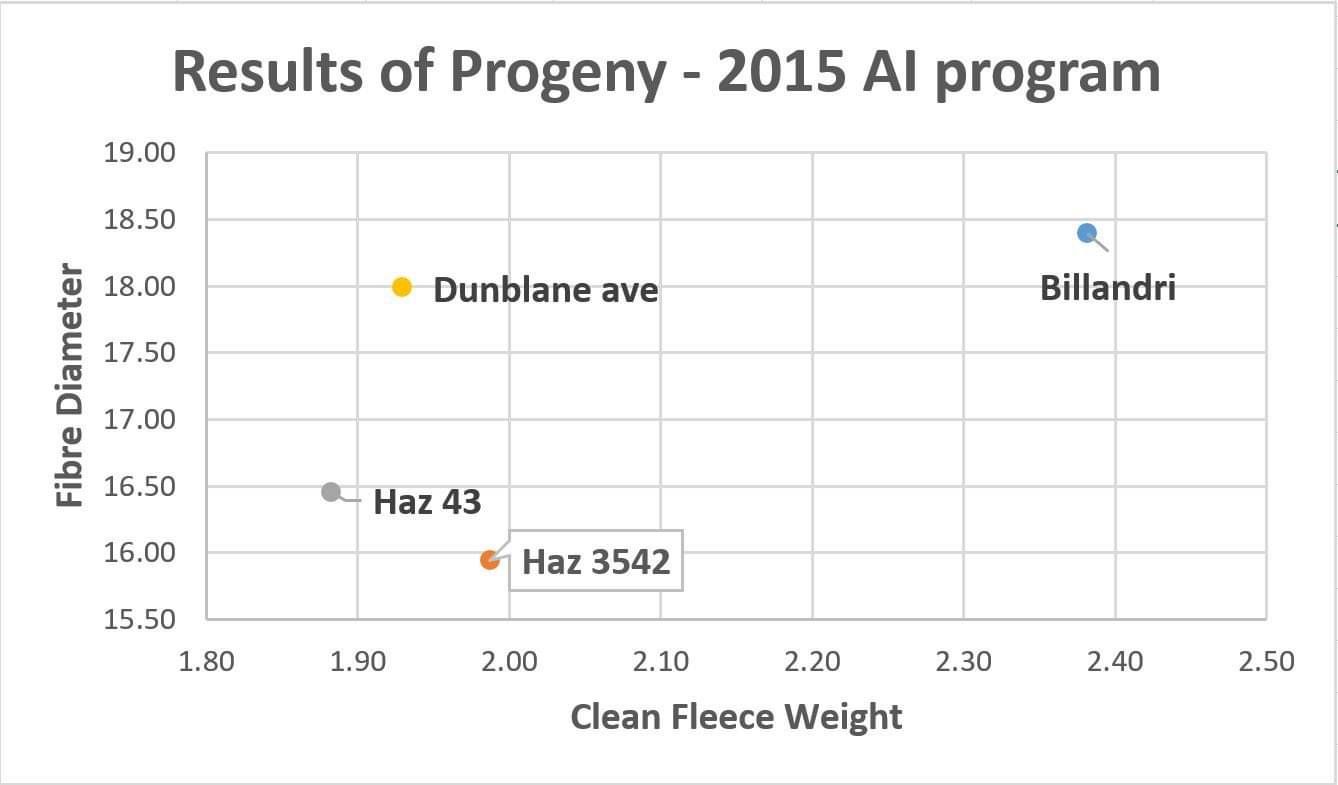
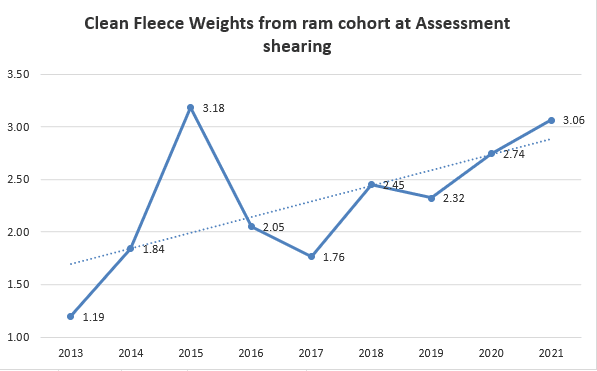
fibre diameter
Dunblane's average flock Fibre Diameter (FD) has fallen to around 18.5u. Historically we drove down clip FD with an aggressive selection focus on FD in order to improve the price for our wool on a per kg basis. A few years ago, we reached a point where we were satisfied where our clip sits on the balance between higher prices per kg and the discounts that occur for ultrasuperfine wool produced in the pastoral zone. We are now pursuing a focus on other economic traits such as Clean Fleece Weights (CFW), Staple Strength (SS) and wool cut per Dry Stock Equivalent (DSE).
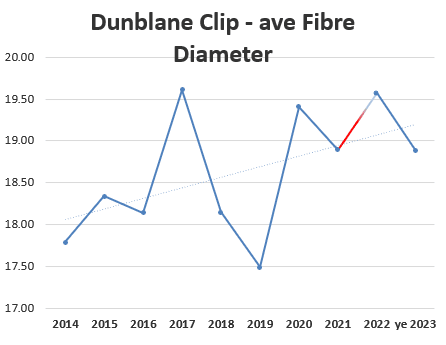
frame size & fuel efficiency
Body size determines how much grass is required for maintenance. So a measure of clean wool produced as a percentage of body mass is really a measure of FUEL EFFICIENCY.
The graph to the right shows the performance of Dunblane wethers in local wether trials compared to the average of all other sheep in the trial, when assessed on a Clean Wool Cut per DSE basis (Fuel Efficiency).
How does one decide what is the right frame (body) size for a high profit wool sheep system? It is not a simple case of bigger sheep are better - sheep are simply the conduit for converting grass into wool. Therefore the efficiency of the converting system (the sheep), is critical to business profitability.
We recognise the grid price cut-off of 22kg carcase weight is important for maximising per head sale prices when selling sheep. Hence, we are selecting for a medium frame sheep with the 22kg carcase weight targets in mind. We have also placed some moderate selection pressure on FAT and muscling to improve dressing percentages.
